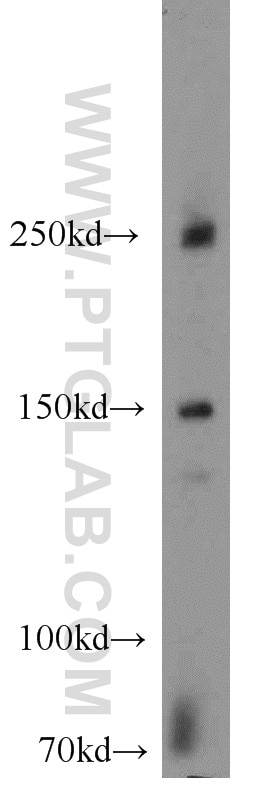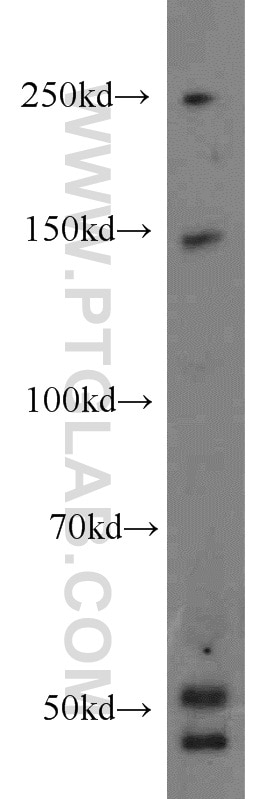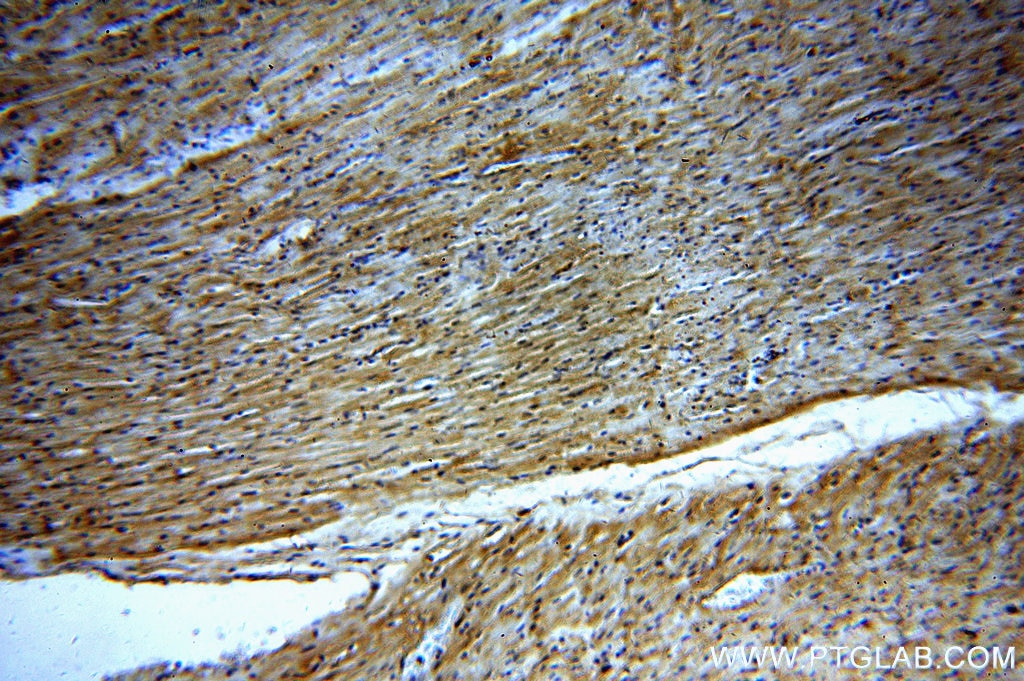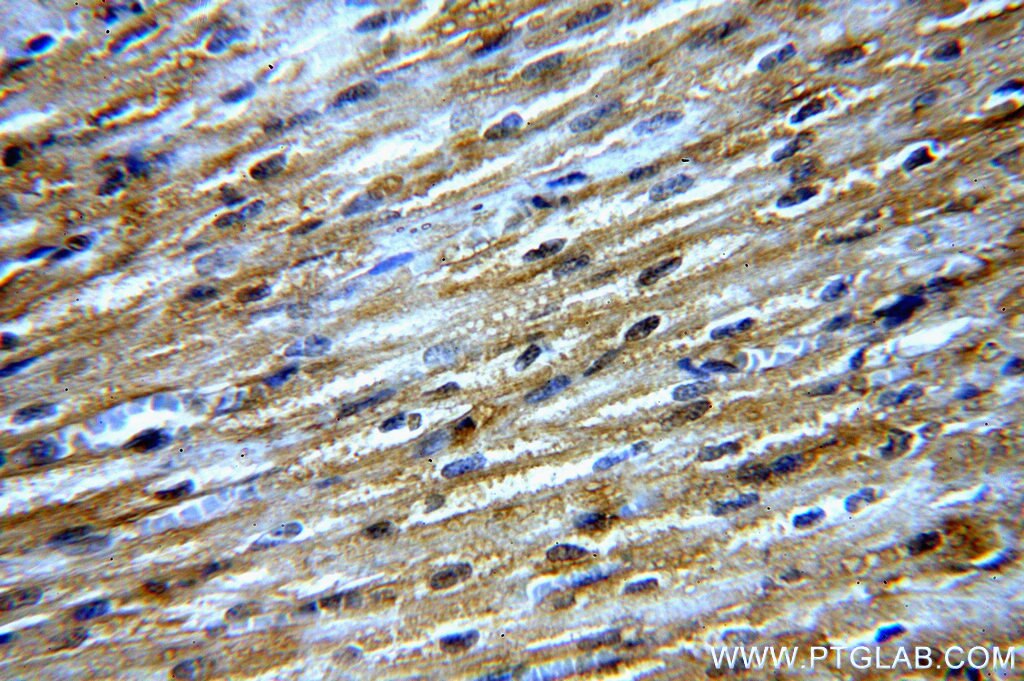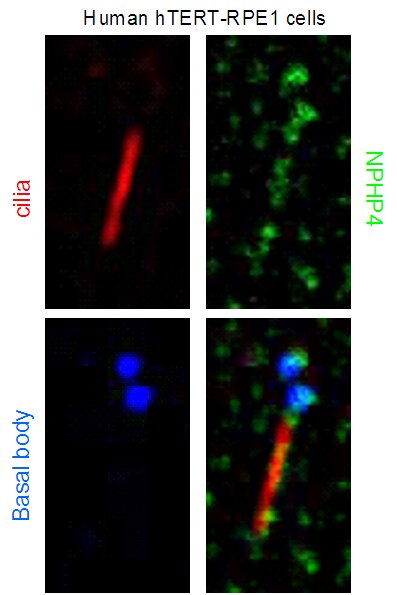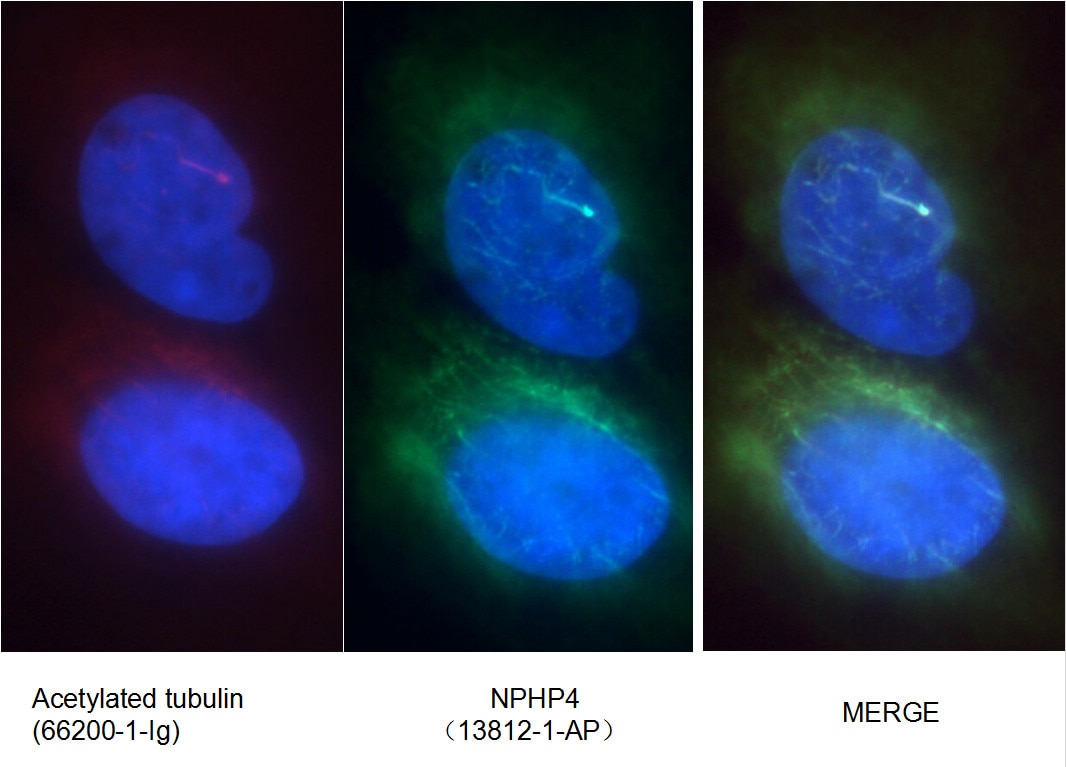Anticorps Polyclonal de lapin anti-NPHP4
NPHP4 Polyclonal Antibody for WB, IHC, IF/ICC, ELISA
Hôte / Isotype
Lapin / IgG
Réactivité testée
canin, Humain, souris
Applications
WB, IHC, IF/ICC, ELISA
Conjugaison
Non conjugué
N° de cat : 13812-1-AP
Synonymes
Galerie de données de validation
Applications testées
| Résultats positifs en WB | tissu cérébral de souris, cellules Y79 |
| Résultats positifs en IHC | tissu cardiaque humain il est suggéré de démasquer l'antigène avec un tampon de TE buffer pH 9.0; (*) À défaut, 'le démasquage de l'antigène peut être 'effectué avec un tampon citrate pH 6,0. |
| Résultats positifs en IF/ICC | cellules hTERT-RPE1, cellules MDCK |
Dilution recommandée
| Application | Dilution |
|---|---|
| Western Blot (WB) | WB : 1:500-1:1000 |
| Immunohistochimie (IHC) | IHC : 1:20-1:200 |
| Immunofluorescence (IF)/ICC | IF/ICC : 1:10-1:100 |
| It is recommended that this reagent should be titrated in each testing system to obtain optimal results. | |
| Sample-dependent, check data in validation data gallery | |
Applications publiées
| WB | See 1 publications below |
| IF | See 11 publications below |
Informations sur le produit
13812-1-AP cible NPHP4 dans les applications de WB, IHC, IF/ICC, ELISA et montre une réactivité avec des échantillons canin, Humain, souris
| Réactivité | canin, Humain, souris |
| Réactivité citée | Humain, souris |
| Hôte / Isotype | Lapin / IgG |
| Clonalité | Polyclonal |
| Type | Anticorps |
| Immunogène | NPHP4 Protéine recombinante Ag4875 |
| Nom complet | nephronophthisis 4 |
| Masse moléculaire calculée | 1426 aa, 158 kDa |
| Poids moléculaire observé | 150 kDa |
| Numéro d’acquisition GenBank | BC040520 |
| Symbole du gène | NPHP4 |
| Identification du gène (NCBI) | 261734 |
| Conjugaison | Non conjugué |
| Forme | Liquide |
| Méthode de purification | Purification par affinité contre l'antigène |
| Tampon de stockage | PBS with 0.02% sodium azide and 50% glycerol |
| Conditions de stockage | Stocker à -20°C. Stable pendant un an après l'expédition. L'aliquotage n'est pas nécessaire pour le stockage à -20oC Les 20ul contiennent 0,1% de BSA. |
Informations générales
NPHP4, also named as KIAA0673, is a cilia-associated protein which involved in the organization of apical junctions in kidney cells together with NPHP1 and RPGRIP1L/NPHP8. It is necessary for normal photoreceptor ribbon synapse maintenance and outer segment formation, and for sperm development.
Protocole
| Product Specific Protocols | |
|---|---|
| WB protocol for NPHP4 antibody 13812-1-AP | Download protocol |
| IHC protocol for NPHP4 antibody 13812-1-AP | Download protocol |
| IF protocol for NPHP4 antibody 13812-1-AP | Download protocol |
| Standard Protocols | |
|---|---|
| Click here to view our Standard Protocols |
Publications
| Species | Application | Title |
|---|---|---|
Nat Genet A transition zone complex regulates mammalian ciliogenesis and ciliary membrane composition. | ||
Sci Adv Ciliopathy protein HYLS1 coordinates the biogenesis and signaling of primary cilia by activating the ciliary lipid kinase PIPKIγ. | ||
Nat Commun Microtubule asters anchored by FSD1 control axoneme assembly and ciliogenesis. | ||
Genetics Primary Cilium Formation and Ciliary Protein Trafficking Is Regulated by the Atypical MAP Kinase MAPK15 in Caenorhabditis elegans and Human Cells. |
